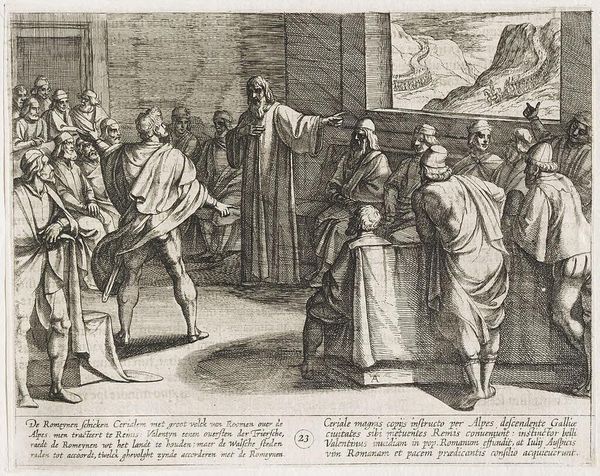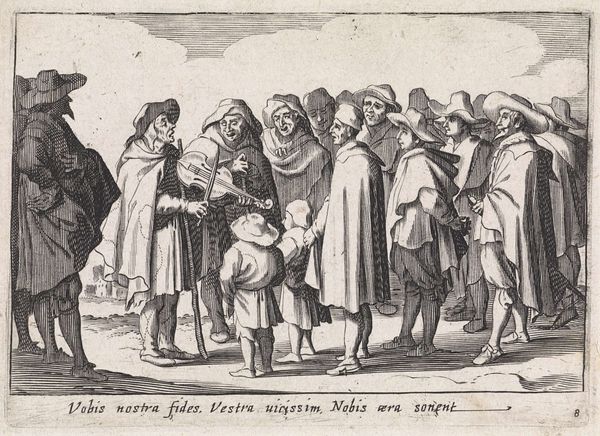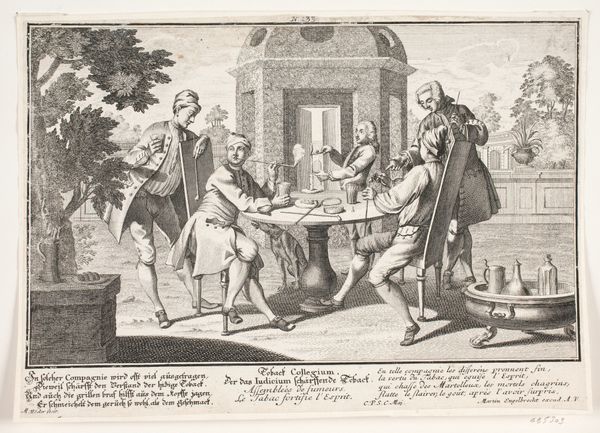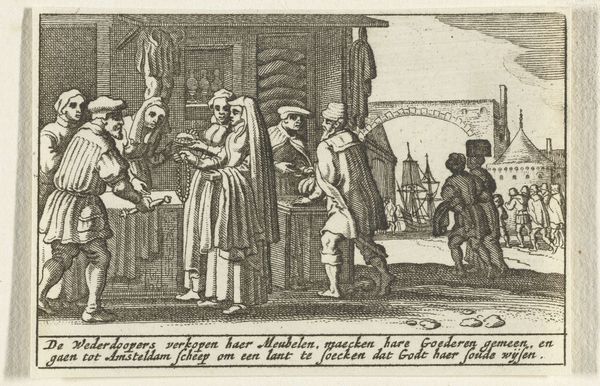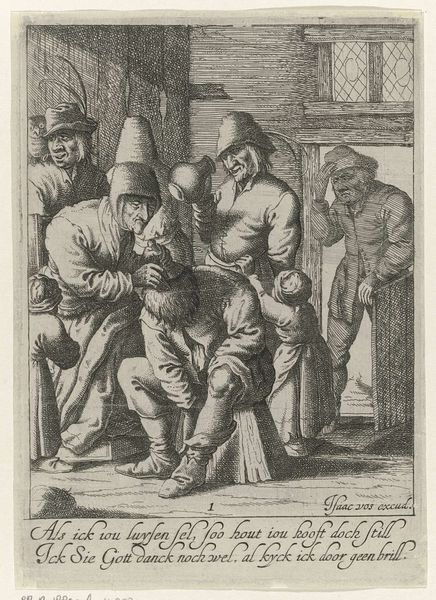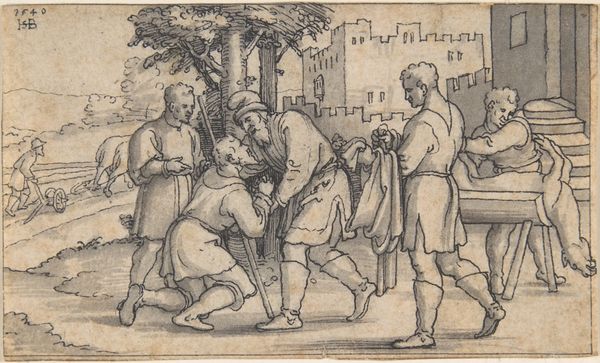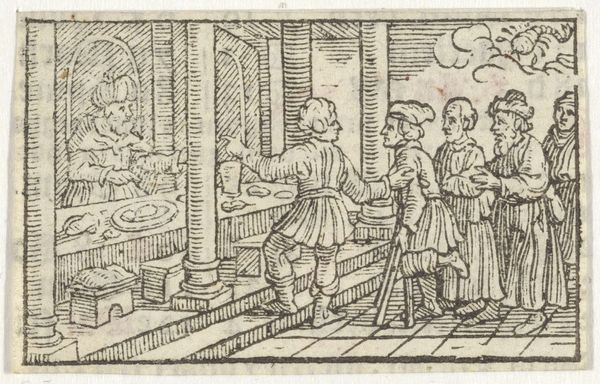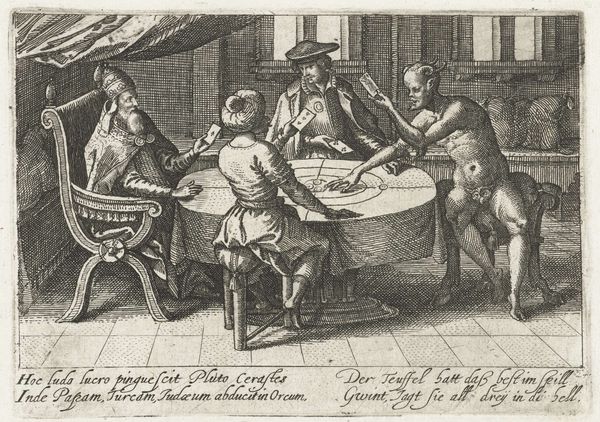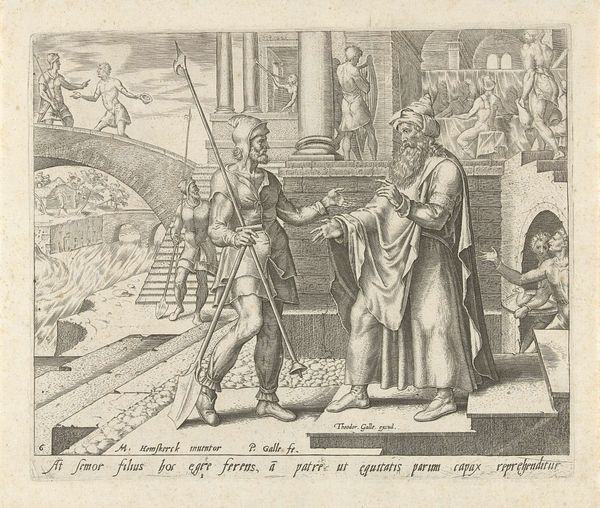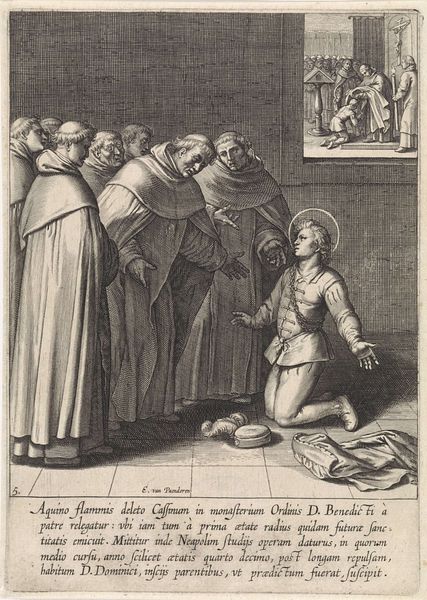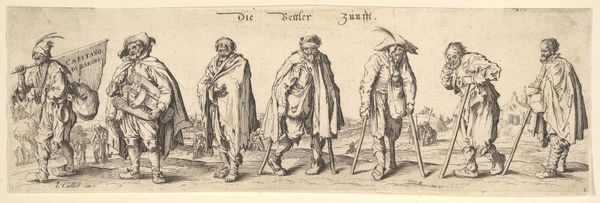
print, engraving
#
narrative-art
#
baroque
#
dutch-golden-age
# print
#
figuration
#
line
#
genre-painting
#
engraving
Dimensions: height 68 mm, width 101 mm
Copyright: Rijks Museum: Open Domain
Editor: This is "Oude mannen worden gedragen," or "Old Men Being Carried," an engraving by Pieter Hendricksz. Schut from the Dutch Golden Age. The line work gives it such a direct feel, like a visual proverb. What stands out to you, as a formalist? Curator: I am immediately drawn to the composition. Notice how Schut has structured the scene. The group of figures is tightly packed, creating a sense of visual density. The implied lines created by the gazes and gestures lead our eye around the artwork, creating a cyclical movement. Note how he distributes light and shadow to sculpt forms and create depth, with the darker areas drawing focus to certain characters. Editor: That's interesting. The cyclical movement makes the figures seem cramped, but purposeful. Curator: Precisely. Look closer at the quality of the lines themselves. The varying thickness creates a sense of texture, doesn’t it? How do these stylistic choices inform the reading of the piece? Consider that, structurally, the artist created a composition around contrasts: dark versus light areas, detailed foreground and blurrier background, characters in tension that hold meaning, which is intensified by the symmetry of two carriers on each side and a passive character seated in a chair, which reinforces the theme of this engraving. Editor: The texture is remarkable! I noticed that it does provide contrast but hadn't examined how that supports the structure as a whole. Curator: The very act of engraving lends itself to a specific type of line. It is precise yet can convey the texture of cloth. And see how the formal composition supports the function of genre scene of everyday life? Editor: So it's not just about what's depicted, but how. I’ll remember to look closely at structure. Thank you! Curator: Indeed. Focusing on composition unlocks many paths to understanding.
Comments
No comments
Be the first to comment and join the conversation on the ultimate creative platform.

